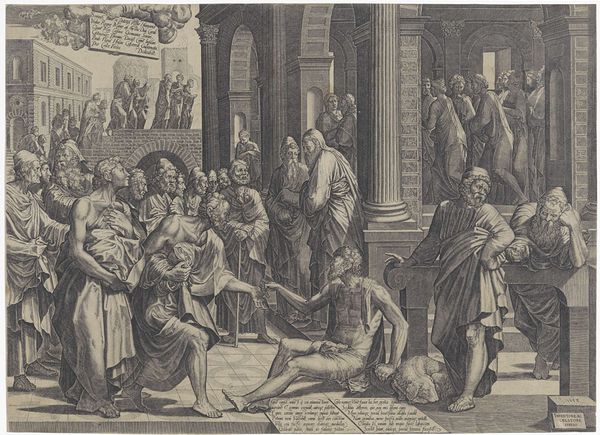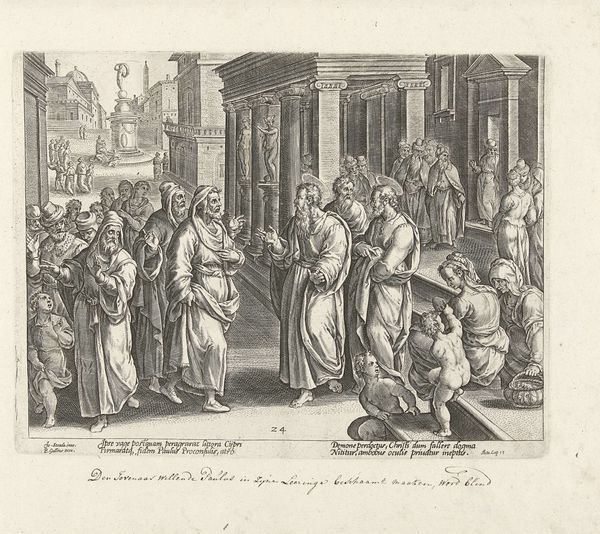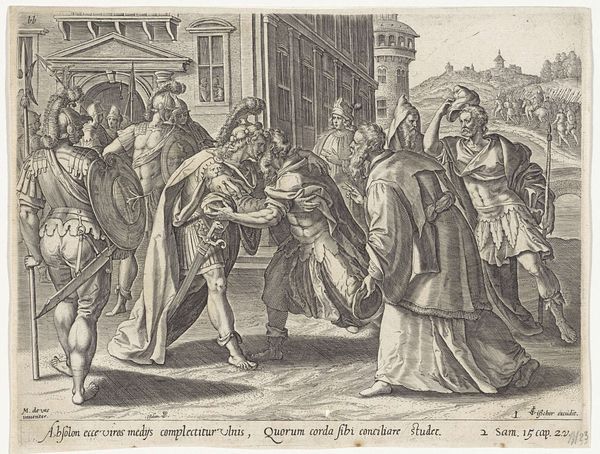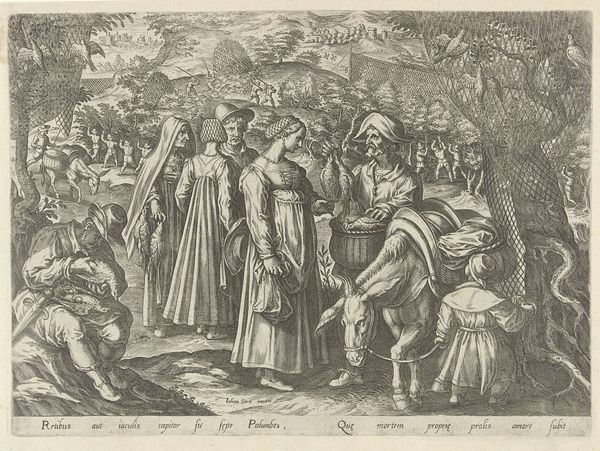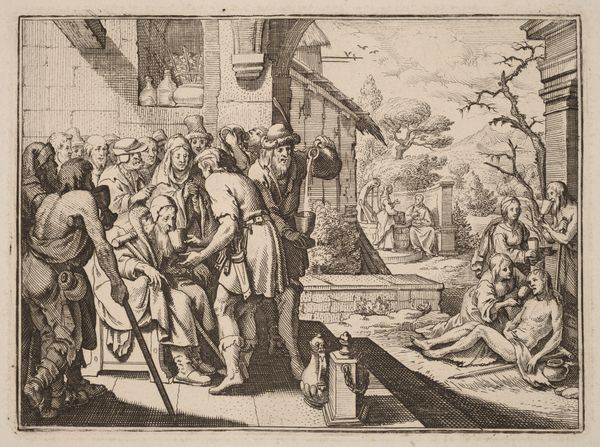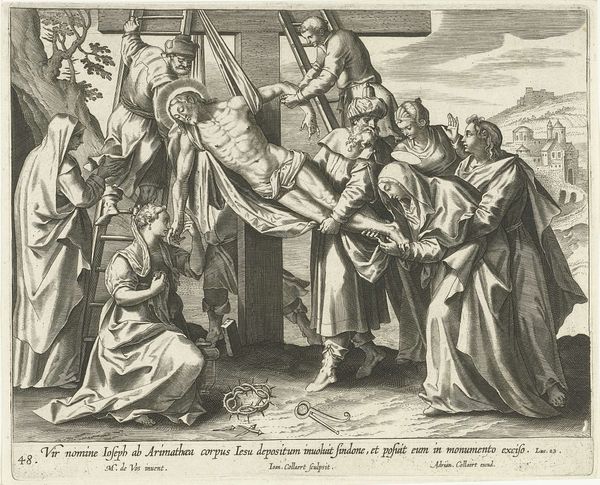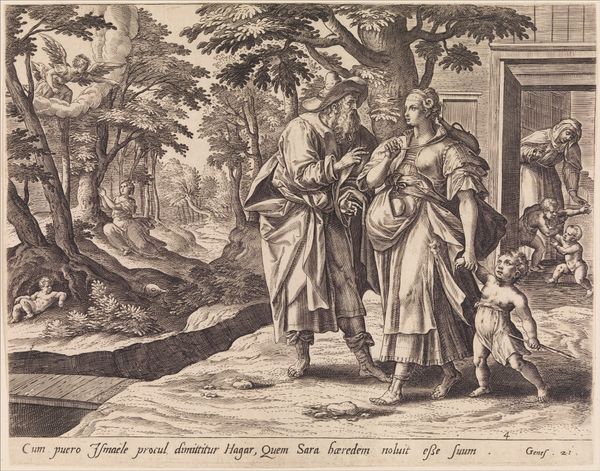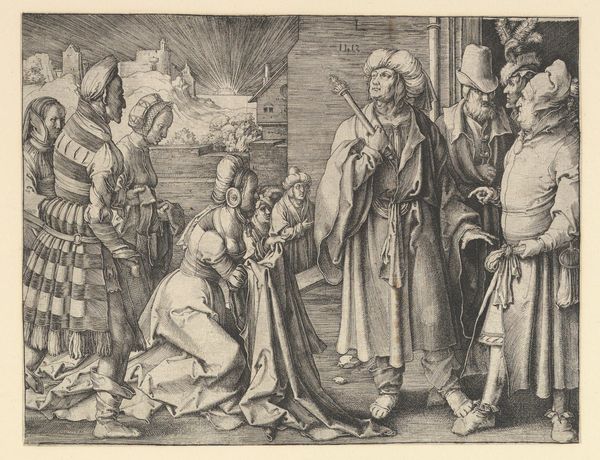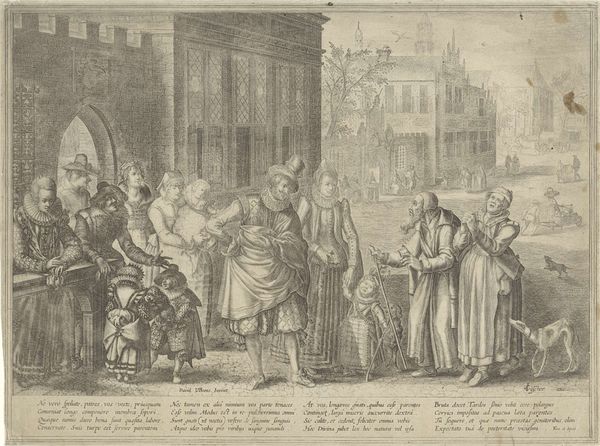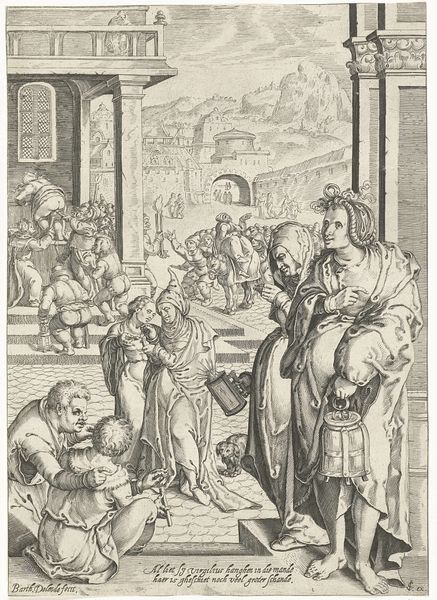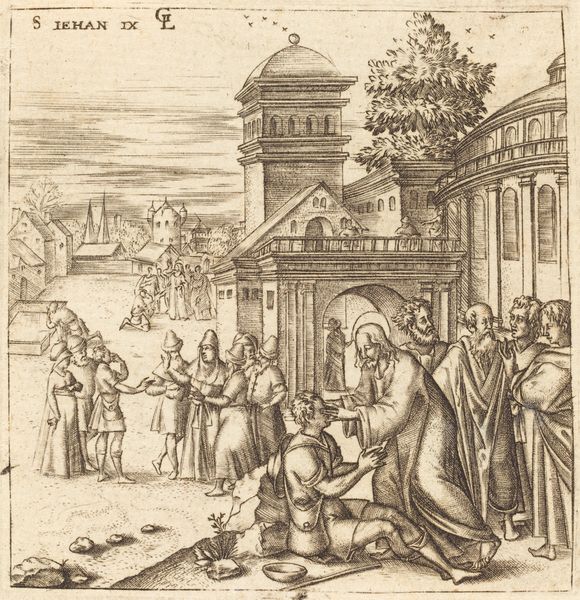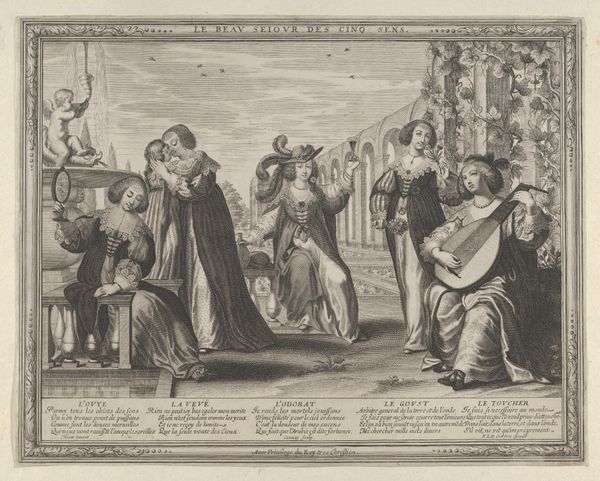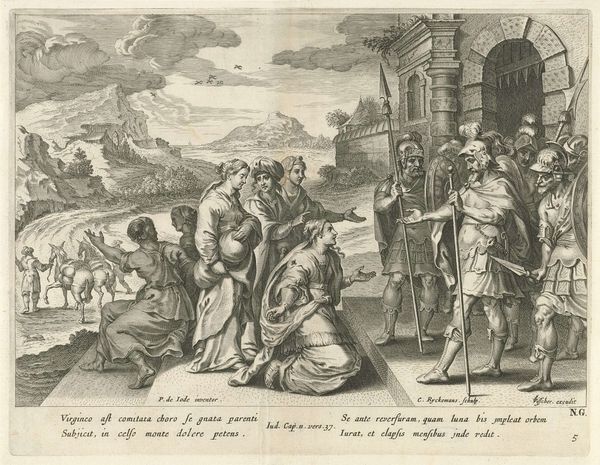
engraving
#
narrative-art
#
baroque
#
figuration
#
history-painting
#
engraving
Dimensions: height 209 mm, width 248 mm
Copyright: Rijks Museum: Open Domain
Editor: So, this is "Achab toont berouw na de vloek van Elia," an engraving from somewhere between 1559 and 1652, currently held at the Rijksmuseum, and attributed to Anonymous. There's something very stage-like about this; all these figures seem very posed. What symbolic language do you see in this piece? Curator: Well, instantly, the contrast between the regal garb of Achab, burdened by the weight of his crown and scepter, and the plain robes of Elia speaks volumes. The clothing visualizes how power confronts prophecy. Do you notice the direction of their gazes, how that shapes the narrative? Editor: Absolutely, Achab looks down, seemingly ashamed or regretful, while Elia stares intensely. Does that gaze reinforce Elia's role as a moral authority? Curator: Precisely. He embodies divine judgement. Notice the detail given to the architectural backdrop as well. It's not merely setting; it represents societal structure, permanence, even civilization, all potentially under threat by divine will, reinforcing the stakes. How do the background figures influence your read of the narrative? Editor: That's a good point! The crowd seems to respond differently, a mix of fear and defiance, adding another layer. I initially viewed them just as fillers in the image. Curator: See how potent visual symbols become in historical storytelling! They help relay emotion, even spiritual significance, to wider audiences. The cultural memory carried within these archetypes allows for continuous interpretation across generations. Editor: This reminds me to delve deeper, because now the characters seem a lot more interesting, complex, even! It has made me question how an artist's symbols could really contribute to society. Curator: That is where iconography thrives: in understanding visual conventions to unpack greater messages.
Comments
No comments
Be the first to comment and join the conversation on the ultimate creative platform.
